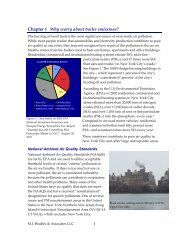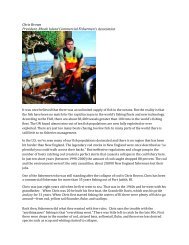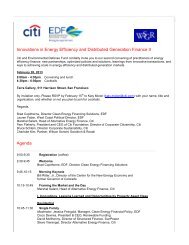fishery, which is regulated by 2-monthly landing limits, has higher discard fractions (31–43% vs. 14–19% for BC). The BC experience suggests that full observer coverage,ITQs, and mortality accounting would reduce West Coast discarding fractions, butsevere catch restrictions on overfished West Coast species may limit such reductions.19. Branch, T., Hilborn, R., Haynie, A., Fay, Flynn, Griffiths, Marshall, Randall, Scheuerell,Ward, Young. 2005. Fleet dynamics and fishermen behavior: lessons for fisheries managers. Underrevision at the Canadian Journal of Fisheries and Aquatics Sciences. In the context ofhow to manage fisheries (practically), a case study of the Alaska halibut ITQ programshows many benefits including reduced ghost fishing, greater season length, andincreased safety.20. Bray, T., Gill, S., Edwards, R. 2006. Assessment of Western Rock Lobster Strategic ManagementOptions: How Do Quota Management Systems Work in Rock Lobster Fisheries? Volume 4.Fisheries Management Paper No. 212. Department of Fisheries Western Australia.http://www.fish.wa.gov.au/docs/mp/mp212/fmp212.pdf. Quota management systemsare now in place for the New Zealand, Tasmanian and South Australian rock lobsterfisheries. New Zealand was the first to move to QMS (1989), followed by the SouthernZone of South Australia (1993), Tasmania (1998) and Northern Zone South Australia(2001). As part of a review of the system of management used for the West CoastRock Lobster Fishery, a West Australian delegation visited New Zealand, Tasmania andSouth Australia in 2004 to learn more about the management systems in place for theirrespective rock lobster fisheries. The report documents history, fishery facts, access tothe fishery (e.g. number of quota owners), sustainability (including TAC limits), andseason for the three fisheries.21. Bruckner, A. 2004. Sea Cucumber Population Status, Fisheries and Trade in the United States.Convention on International Trade in Endangered Species of Wild Fauna and Flora.March. Includes information on biology, and vessels in sea cucumber fishery.22. California Department of Fish and Game (CADF&G) 2005a. Dungeness Crab. AnnualStatus of the Fisheries Report. Report includes information on recreational catch.23. California Department of Fish and Game (CADF&G) 2005b. Purple Sea Urchin..Annual Status of the Fisheries Report. Report includes information on recreationalcatch.24. California Fish and Game Commission (CAF&G) 2006. Final statement of reasons forregulatory action re: commercial Tanner crab fishery provisions. January 3, 2006. Cost ofobservers for crab fishery approximately $300-350/day.25. Casey, K., Dewees, C., Turris, B., Wilen, J., 1995. The Effects of Individual Vessel Quotas inthe British Columbia Halibut Fishery. Marine Resource Economics, Volume 10, pp. 211-230.Implementation of individual vessel quotas (IVQs) in the British Columbia halibutfishery has provided a unique opportunity to examine the effects of this managementtechnique on a previously intense “derby” fisher. This paper describes the changes thathave occurred in the fishery since the introduction of individual vessel quotas in 1991.The results presented here are largely based on the finding of two surveys. InSeptember 1993, we conducted in-depth interviews with most of the major halibutprocessors in British Columbia. These processors reported significant changes in the- 4 -
processing and marketing of halibut. In Spring 1994, we conducted a mail survey of all435 licensed halibut fishermen. The survey consisted of several series of questionsdesigned to measure changes in fishing operations (crew size, fishing practices, etc.),quota leasing activities, changes in fishing income, and opinions about the effects ofIVQs. The results presented here provide important information nabout the effects ofthe British Columbia halibut IVQ program to date and will be useful for comparison tosimilar management programs implemented elsewhere.26. Catch statistic reports 1985-1995. Retrieved March 13, 2006, from http://wwwsci.pac.dfo-mpo.gc.ca/sa/Commercial/HistoricStats_e.htm.Reports from theDepartment of Fisheries and Oceans, Canada provide catch statistics (landings, value,landings by month) on BC groundfish, BC halibut, and BC sablefish from 1985-1995.27. Cieri, M., McCay, B., 2000. Fishing Ports of the Mid-Atlantic. Report to the Mid-AtlanticFishery Management Council. April. Report including information on fisherydependent communities in the Mid-Atlantic.28. Chuenpagdee, R., Morgan, L., Maxwell, S., Norse, E., Pauly, D., 2003. Shifting gears:assessing collateral impacts of fishing methods in US waters. Front Ecol Environ 2003; 1(10:517-524. Problems with fisheries are usually associated with overfishing; in other words,with the deployment of “too many” fishing gears. However, overfishing is not the onlyproblem. Collateral impacts of fishing methods on incidental take (bycatch) and onhabitats are also cause for concern. Assessing collateral impacts, through integrating theknowledge of a wide range of fisheries stakeholders, is an important element ofecosystem management, especially when consensual results are obtained. This can bedemonstrated using the “damage schedule approach” to elicit judgments from fishers,scientists, and managers on the severity of fishing gear impacts on marine ecosystems.The consistent ranking of fishing gears obtained from various respondents can serve asa basis for formulating fisheries policies that will minimize ecosystem impacts. Suchpolicies include a shift to less damaging gears and establishing closed areas to limitcollateral impacts.29. Clark, W., Hare, S. 2005. Assessment of the Pacific halibut stock at the end of 2005.International Pacific Halibut Commission. Each year the IPHC staff assesses theabundance and potential yield of Pacific halibut using all available data from thecommercial fishery and scientific surveys. Exploitable biomass in each of IPHCregulatory areas 2B, 2C, 3A, 3B, 4A, and 4B is estimated by fitting a detailed populationmodel to the data from that area, going back to 1974 in the eastern areas and to 1996 inAreas 3B and 4. Exploitable biomass in Area 2A is estimated by applying a survey-basedestimate of relative abundance to the analytical estimate of biomass in Area 2B. In Area4CDE the estimate of exploitable biomass is based on the NMFS trawl survey of theeastern Bering Sea shelf (available for the first time this year [2005]). The new 2005estimate is the same as what the old estimation method would have produced.Coastwide exploitable biomass is little changed. Fishery CEY in Areas 4B and 4CDE islower because of the adoption of a lower harvest rate in those areas. This reportprovides biomass information as well as historical catch information, historical halibutbycatch, and effort (CPUE data).- 5 -
- Page 6 and 7: 30. Clark, W., St-Pierre, G., 1997.
- Page 8 and 9: eleas/2001/nr024_e.htm. Description
- Page 10 and 11: 61. Gislason, GS, 2002. BC Seafood
- Page 12 and 13: 72. Hall-Arber, M. et al. 2004. New
- Page 14 and 15: Description of the 2005 IPHC regula
- Page 16 and 17: 94. Maryland Commercial Fisheries,
- Page 18 and 19: uyer broker, an increased competiti
- Page 20 and 21: http://www.fakr.noaa.gov/ram/daily/
- Page 22 and 23: Harvest by Port e.g. http://www.fak
- Page 24 and 25: 133. Pacific Fishery Management Cou
- Page 26 and 27: September. The paper focused on DAP
- Page 28 and 29: the Maritimes of Canada. Three stud
- Page 30 and 31: Quota Management Area 3B. Historica
- Page 32: 1995, the program changed its empha


![Annotated bibliography [PDF] - Environmental Defense Fund](https://img.yumpu.com/50613332/5/500x640/annotated-bibliography-pdf-environmental-defense-fund.jpg)

![What do we mean by MSY? [PDF]](https://img.yumpu.com/49525661/1/190x245/what-do-we-mean-by-msy-pdf.jpg?quality=85)
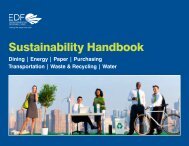
![Print version [PDF] - Environmental Defense Fund](https://img.yumpu.com/46812189/1/190x201/print-version-pdf-environmental-defense-fund.jpg?quality=85)
![Mercury Alert: Cleaning up Coal Plants for Healthier Lives [PDF]](https://img.yumpu.com/45587786/1/190x143/mercury-alert-cleaning-up-coal-plants-for-healthier-lives-pdf.jpg?quality=85)
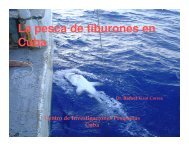

![Program Overview [PDF] - Environmental Defense Fund](https://img.yumpu.com/34005758/1/190x96/program-overview-pdf-environmental-defense-fund.jpg?quality=85)
